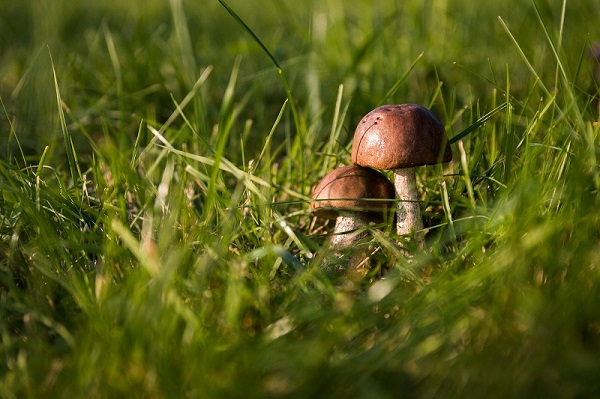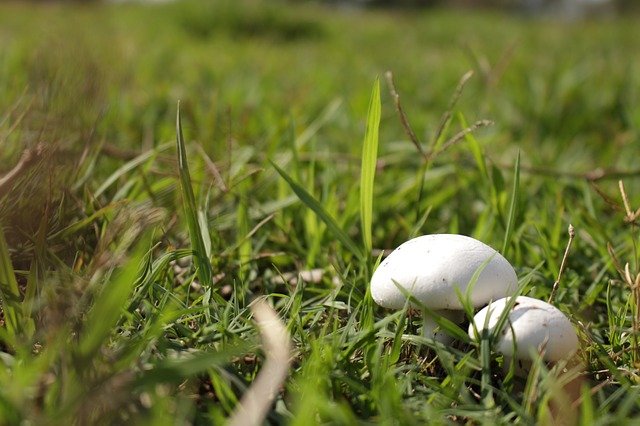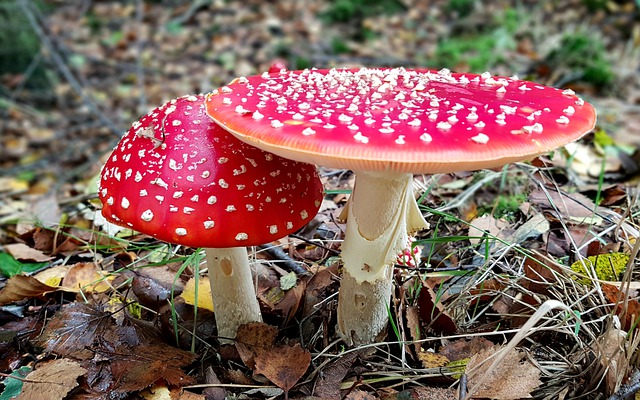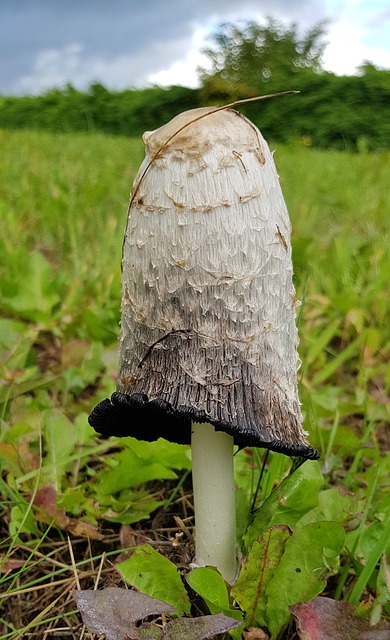Here at Lawn & Weed Expert, we are often asked by both our clients and homeowners why mushrooms sometimes grow on their lawn. We understand that as a homeowner you may not have any knowledge of mushrooms, and a sudden outbreak may be cause for concern, however, the professionals at Lawn & Weed Expert are here to tell you it is not! The reasons why lawns get mushrooms are usually positive

Mushrooms in your lawn
Mushrooms, also known as toadstools, are naturally occurring and can sprout up on your lawn given the weather and ground conditions are suitable. They are commonly found in turfed areas as well as pastures, woods and most places where you're likely to find dead plant material. As we mentioned in our opening paragraph, mushrooms shouldn't be a cause for concern and are in fact a sign of a healthy lawn and a part of the growing environment in the form of fungi.
What are fungi?
Fungi are living organisms, neither plant nor animal, but a class of their own. Currently, there are millions of different species of fungi in the world, all with varying characteristics and features. Some are very easy to spot, whereas some are completely invisible and difficult to identify, however, each one is very important and has a big role to play. Fungi exist to help break down organic waste and transform it into plant food, meaning they are recyclers!
Some fungi have been known to partner with certain plants and attach themselves onto roots, physically feeding the plant with the nutrients they have produced. In return, the plant provides the fungi with sugars it creates from sunlight.
Why do mushrooms grow on turf?
The reason why lawns get mushrooms is that the soil in your lawn is brimming with fungi and their spores. You can't see them and they won't hurt you, but they are there. They only start to appear when the soil and weather conditions allow them to do so. Mushrooms thrive when the soil is damp and carbon-rich, so often start to sprout after an extended period of rain and cool weather with decaying organic matter in the soil such as leaves, bark and grass clippings.
Although mushrooms may look unsightly, they are actually beneficial to your lawn. The extensive root system of mushrooms helps the soil to retain water and break down organic materials, which in turn helps to add nutrients back into your lawn.
The science of mushrooms
Underneath the soil, mushrooms contain many blades which are referred to as 'gills'. Within these gills, there are millions of spores and it is these spores which are responsible for the reproduction of the fungus that you see above the ground. The spores are carried in the air and when they have reached a suitable destination, they begin to germinate and send out long, thin strands or filaments, also known as Hyphae. Single Hyphae are often invisible to the naked eye but can sometimes be seen in particularly dark soil or damp, decomposing bark.
Reducing mushrooms on your lawn
Mushrooms and toadstools can be removed from your lawn by picking them away by hand (wearing gloves as a precaution) or by brushing them off. Alternatively, they can be mown off with a special box on the lawnmower to collect them. There are usually two ways of reducing the development of mushrooms on your lawn:
- Decreasing the amount of thatch by scarifying your lawn and then reducing the amount of fertiliser applied to your lawn
- Looking for buried debris under your lawn and removing it, preventing mushrooms from growing out of it
It is not possible to completely remove mushroom growth in your lawn as long as there is something decaying in your soil. Besides, removing decomposing materials could actually be more detrimental than helpful.
Common mushrooms on your lawn
So now you know why there are mushrooms on your lawn, and how to remove them (if you want to) let's take a look at some common lawn mushroom species. Please note that these photos show mushrooms that vary in appearance in real life. Please do not use these photographs as a reference before treating or eating mushrooms in your lawn.

Field mushroom
These white mushrooms are very common in UK lawns, they measure between 5 and 10cm across and have a white stem that becomes narrower near the base. Their gills are brown and they usually appear during summer through to autumn. These mushrooms were once very common but have become less common over time due to chemical sprays and herbicides.

Fly Agaric
This is a classic toadstool that you might find in your lawn. Unlike the smaller field mushrooms, these toadstools can measure between 10 and 25cm across meaning they're much more noticeable toadstools in your lawn. They definitely have that 'fairytale' look with their red heads and white spots (or warts). They often cluster around the bottom of pine trees and most definitely should not be eaten!

Shaggy Ink Cap
This lawn mushroom is a bit of a shapeshifter. When it's in its white and fluffy form it can be eaten (and is supposedly quite tasty), but leave it overnight and it will develop the black 'ink stain' that you can see above. This lawn mushroom is commonly found in the grass alongside roads or in soil that's recently been dug up.
Fun Fact: If you mix the ink from these lawn mushrooms with water and cloves and heat it over low heat, you can create ink for calligraphy/writing!
If you have mushrooms in your lawn and would like to get them removed, the professionals here at Lawn & Weed Expert are happy to help! We offer experts mould and fungus treatment to keep your lawn looking in tip-top shape. For more information, be sure to visit our page or contact us below.
Contact Us >